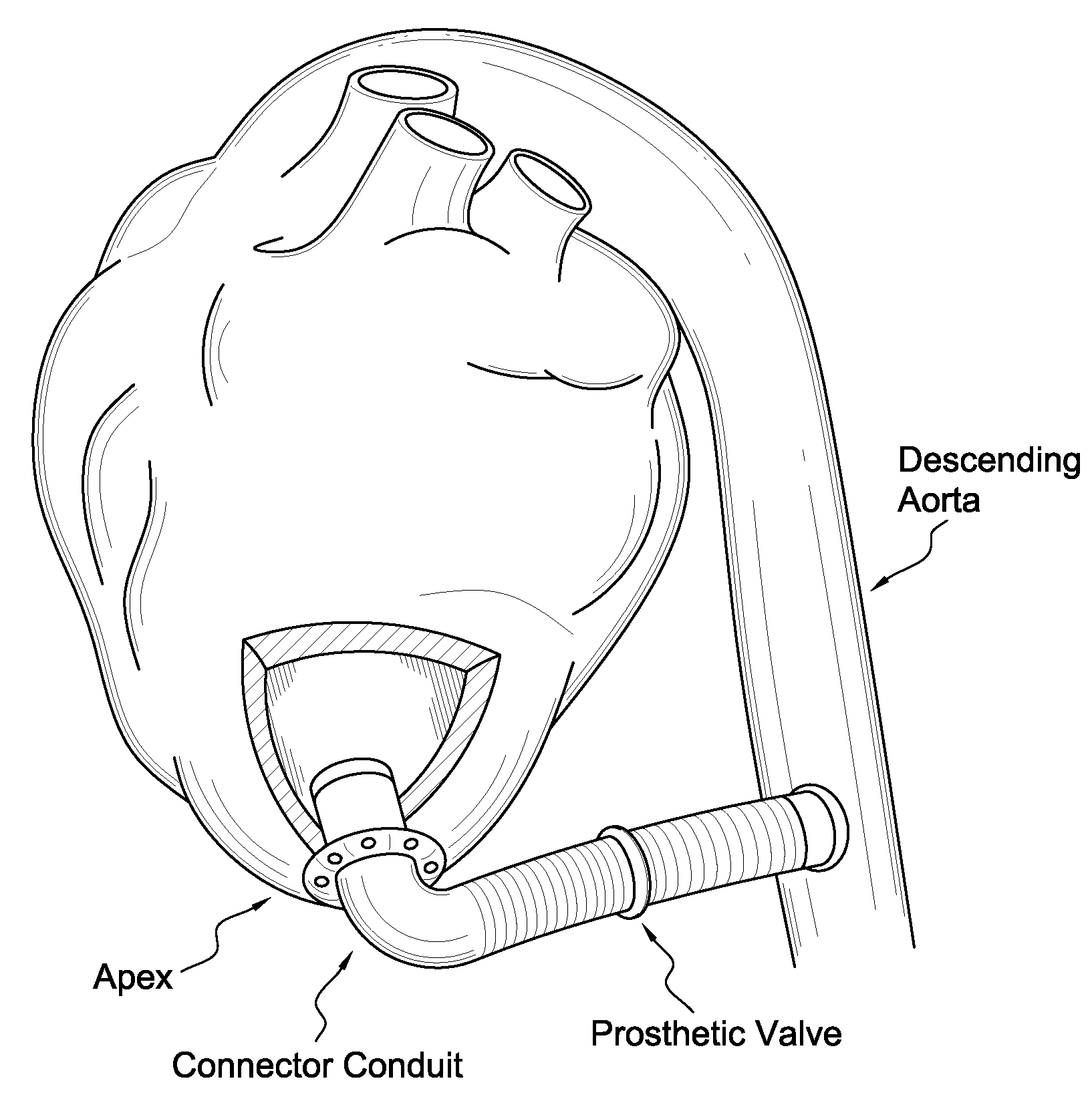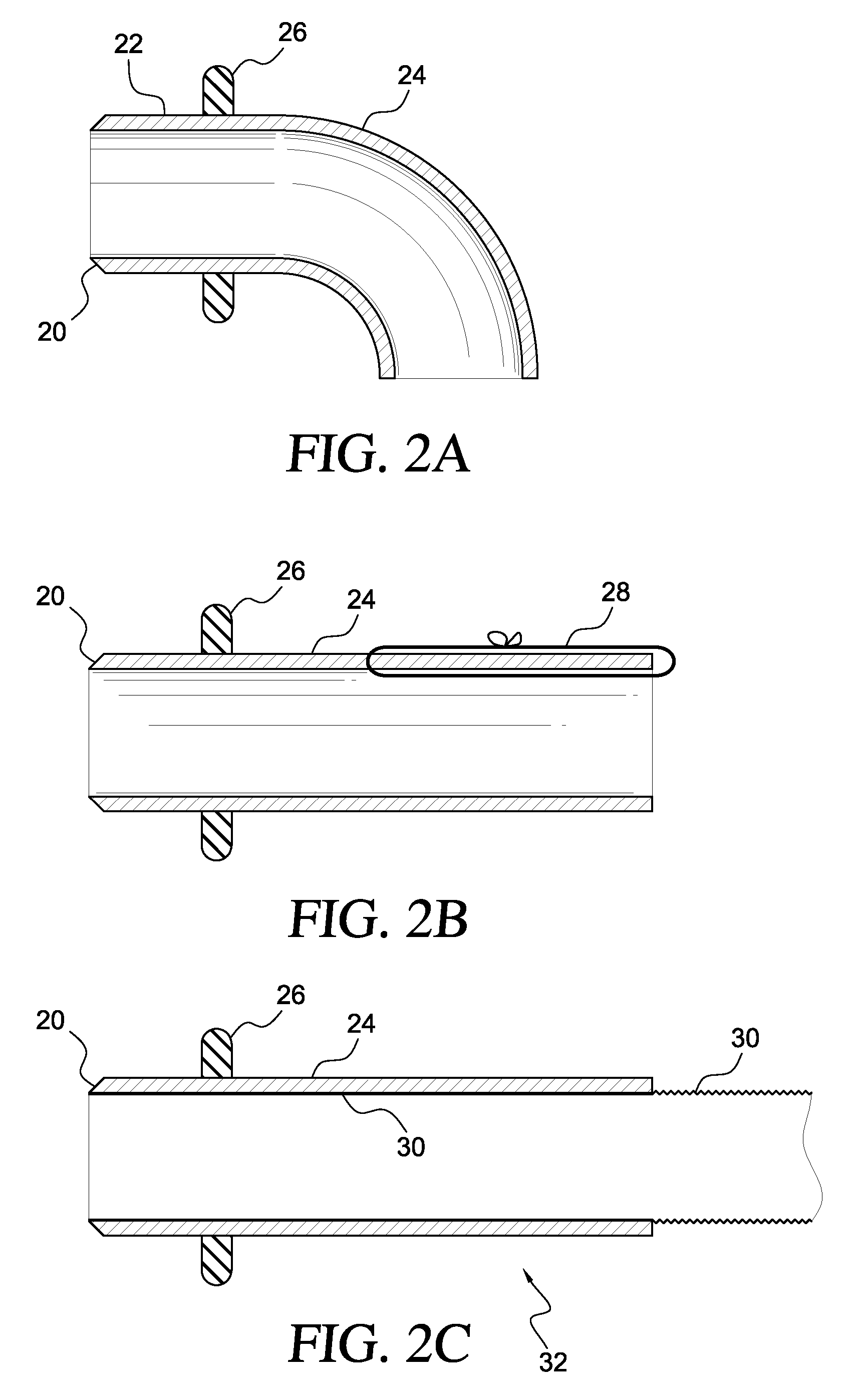Apparatus and method for suturelessly connecting a conduit to a hollow organ
a technology of connector conduits and hollow organs, applied in the field of apparatus and methods for securing connector conduits to hollow organs, can solve the problems of a lack of efficient devices for performing procedures, and achieve the effect of preventing blood loss
- Summary
- Abstract
- Description
- Claims
- Application Information
AI Technical Summary
Benefits of technology
Problems solved by technology
Method used
Image
Examples
Embodiment Construction
[0063]FIG. 1 is an illustration of an apicoaortic conduit, which extends from the apex of the left ventricle to the descending aorta with a prosthetic valve positioned within the conduit. The preferred embodiment of the present invention includes aspects of the connector conduit and an applicator used to implant the connector conduit.
[0064] The connector-conduit with applicator of the present invention is best described as consisting of five major parts: a connector-conduit, a retractor, hole forming device such as a coring element, a pushing component, and a handle. A fabric material pleated conduit of a type common and well known in the field is permanently fixed to the inner surface of a rigid connector to form the connector-conduit. The conduit extends from the forward edge of the connector and continues beyond the connector, as a flexible portion, for some distance.
[0065] The connector-conduit includes a rigid portion defined by an internal support structure made of a suitabl...
PUM
 Login to View More
Login to View More Abstract
Description
Claims
Application Information
 Login to View More
Login to View More - R&D
- Intellectual Property
- Life Sciences
- Materials
- Tech Scout
- Unparalleled Data Quality
- Higher Quality Content
- 60% Fewer Hallucinations
Browse by: Latest US Patents, China's latest patents, Technical Efficacy Thesaurus, Application Domain, Technology Topic, Popular Technical Reports.
© 2025 PatSnap. All rights reserved.Legal|Privacy policy|Modern Slavery Act Transparency Statement|Sitemap|About US| Contact US: help@patsnap.com



